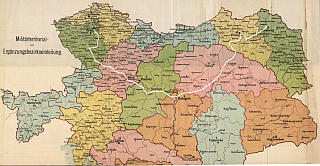
Švejk's journey on a of Austria-Hungary from 1914, showing the military districts of k.u.k. Heer. The entire plot of The Good Soldier Švejk is set on the territory of the former Dual Monarchy.
The Fateful Adventures of the Good Soldier Švejk (mostly known as The Good Soldier Švejk) by Jaroslav Hašek is a novel that contains a wealth of geographical references - either directly through the plot, in dialogues or in the author's narrative. Hašek was himself unusually well travelled and had a photographic memory of geographical (and other) details. It is evident that he put a lot of emphasis on geography: Eight of the 27 chapter headlines in the novel contain geographical names.
This web site will in due course contain a full overview of all the geographical references in the novel; from Prague in the introduction to Klimontów in the unfinished Part Four. Continents, states (also defunct), cities, market squares, city gates, regions, districts, towns, villages, mountains, mountain passes, oceans, lakes, rivers, caves, channels, islands, streets, parks and bridges are included.
The list is sorted according to the order in which the names appear in the novel. The chapter headlines are from Zenny Sadlon's recent translation (1999-2008) and will in most cases differ from Cecil Parrott's translation from 1973.
The quotes in Czech are copied from the on-line version of The Good Soldier Švejk: provided by Jaroslav Šerák and contain links to the relevant chapter. The toolbar has links for direct access to Wikipedia, Google maps, Google search, svejkmuseum.cz and the novel on-line.
The names are coloured according to their role in the novel, illustrated by these examples: Sanok a location where the plot takes place, Dubno mentioned in the narrative, Zagreb part of a dialogue, and Pakoměřice mentioned in an anecdote.
 Places index of countries, cities, villages, mountains, rivers, bridges ... (591)
Show all
Places index of countries, cities, villages, mountains, rivers, bridges ... (591)
Show all I. In the rear
I. In the rear  14. Švejk as military servant to senior lieutenant Lukáš (60)
14. Švejk as military servant to senior lieutenant Lukáš (60) II. At the front
II. At the front  2. Švejk's budějovická anabasis (64)
2. Švejk's budějovická anabasis (64) 3. Švejk's happenings in Királyhida (43)
3. Švejk's happenings in Királyhida (43) III. The famous thrashing
III. The famous thrashing  1. Across Magyaria (38)
1. Across Magyaria (38) 2. In Budapest (38)
2. In Budapest (38) 3. From Hatvan to the borders of Galicia (50)
3. From Hatvan to the borders of Galicia (50) 4. Forward March! (42)
4. Forward March! (42)



|
I. In the rear |
 | |
12. A religious debate | |||
 | Cognac |  | |||
| |||||

Cognac is mentioned indirectly because Švejk had cognac in his flask during the second field mass with Feldkurat Katz. The field chaplain gallantly offered his pious companion a swig of the bottle. The latter perceived this conspicuous enough to justify a visit to his colleague to try to talk him away from the thornful path of sin. This visit led to the religious debate that [I.12] is all about.
Background
Cognac in this context refers to a group of grape spirits from the region around Cognac in France. The drink is produced here and stored (at least two years) in oak vessels to achieve the particular cognac taste.
Quote(s) from the novel
[I.12] Švejk sloužil s polním kurátem ještě jednu polní mši u zákopníků, kam byl omylem pozván ještě jeden polní kurát, bývalý katecheta, neobyčejně nábožný člověk, dívající se na svého kolegu velice udiveně, když ten mu nabízel ze Švejkovy polní láhve, kterou ten vždy nosil na takové náboženské úkony s sebou, doušek koňaku.
Also written:KoňakczKonjakkno
 | Nová Paka |  | |||
| |||||
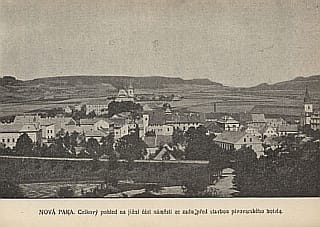
Průvodce Podkrkonoším, , 1911
Nová Paka is mentioned by Švejk in anecdote he tells Feldkurat Katz. At U zlatého věnce he had spoken to a man from the countryside who had gone to their offices of Okresní hejtmanství Nová Paka to ask why his carriage had been requisitioned for war duty. Here he was unceremoniously thrown out. Then he continued to the town square (see Nová Paka náměstí) where a stranger asked if he could look after his horses. The other man never returned and the poor man was left with the horses and eventually he ended up in Hungary.
Background
Nová Paka is a town in north Bohemia in the district of Jičín. It is located 22 km north of the district capital. As of 2016 the population is 9,208. The town hosts a museum and a historic town square.
In 1913 Nová Paka counted 6,057 inhabitants, and all apart from 12 were Czechs. The town was the centre of okres and hejtmanství of the same name.
Demography
According to the 1910 census Nová Paka had 6,847 inhabitants of which 6,824 (99 per cent) reported that they used Czech in their daily speech. The judicial district was okres Nová Paka, administratively it reported to hejtmanství Nová Paka.
Source:Seznam míst v království Českém(1913)
Military
In accordance with the recruitment districts infantrymen from Nová Paka were usually assigned to Infanterieregiment Nr. 74 (Jičin) or k.k. Landwehrinfanterieregiment Nr. 11 (Jičin).
Quote(s) from the novel
[I.12] Včera jsem mluvil v hospodě ,U zlatého věnce’ s jedním člověkem z venkova, je mu už šestapadesát let, a ten šel se optat na okresní hejtmanství do Nové Paky, proč mu rekvisírovali bryčku.
Also written:Neu-Pakade
Literature
 | Nová Paka náměstí |  | |||
| |||||
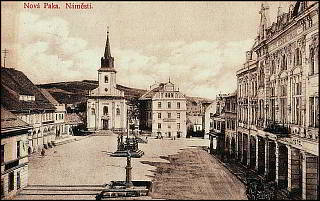
1916
Nová Paka náměstí is mentioned by Švejk in anecdote he tells Feldkurat Katz. At U zlatého věnce he had spoken to a man from the countryside who had gone to their offices of OHNovaPakato ask why his carriage had been requisitioned for war duty. Here he was unceremoniously thrown out. Then he continued to the town square where a stranger asked if he could look after his horses. The other man never returned and the poor man was left with the horses and eventually he ended up in Hungary.
Background
Nová Paka náměstí is the town square of Nová Paka, today Masarykovo náměstí.
Quote(s) from the novel
[I.12] Včera jsem mluvil v hospodě ,U zlatého věnce’ s jedním člověkem z venkova, je mu už šestapadesát let, a ten šel se optat na okresní hejtmanství do Nové Paky, proč mu rekvisírovali bryčku. Na zpáteční cestě, když ho z okresního hejtmanství vyhodili, díval se na trén, který právě přijel a stál na náměstí. Nějaký mladý muž poprosil ho, aby mu chvíli počkal u koní, že vezou pro vojsko konservy, a víckrát už nepřišel. Když se pak hnuli, musel s nimi a dostal se až do Uher, kde někde poprosil taky někoho, aby mu počkal u vozu, a tím se jedině zachránil, a to by ho táhli do Srbska. Přijel celý vyjevený a víckrát nechce mít nic s vojenskejma věcma.“
Literature
 | Cologne |  | |||
| |||||
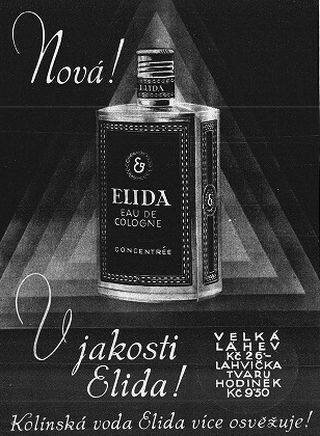
,8.8.1929
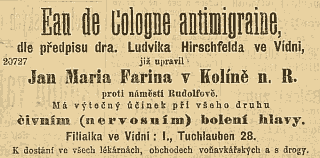
,5.12.1889

,2.11.1914
Cologne is indirectly mentioned through the term water from Cologne, in other words Eau de Cologne, the world famous perfume.
Background
Cologne is a city on the middle stretch of the Rhine, with currently in excess of 1 million inhabitants. It was in 2016 the 4th largest city in Germany.
Since becoming part of Prussia in 1815 Cologne had experienced an enormous growth and become an important industrial and transport centre, and by 1913 the population count was nearly 700,000. It was at the outbreak of World War I also the largest fortress complex in Germany, occupying a strategic position on the Rhine. From 1918 until 1926 the city was occupied by British troops. The later so famous Konrad Adenauer was mayor from 1917 until he was dismissed by the Nazis in 1933.
Eau de Cologne
The famous perfume was invented in 1709 by Giovanni Maria Farina and soon trickled down through the various underlying layers of society. The original outlet in Cologne still exists and before World War I the company had a sales office in Vienna.
The brand Eau de Cologne was one of the early victims of the renaming frenzy during World War I. This happened in France in November 1914 as it after a vote was decided to rename the fragrance "Eau de Lovain" after the Belgian city of Lovain (Leuven) that was destroyed and looted by the Germans in late August that year. Other candidates were also considered but didn't get as many votes. Amongst them was Eau de Pologne (Polish Water).
The best known example of degermanisation is surely Sankt Peterburg which as early as 1914 was renamed Petrograd, but it was not alone. In USA the mildly amusing name "liberty cabbage" was proposed as a substitute for sauerkraut, but it is unclear if it was ever introduced.
Quote(s) from the novel
[I.12] V ráji účinkují rozprašovače kolínské vody a filharmonie hraje tak dlouho Brahmsa, že raději dáte přednost peklu a očistci. Andílkové mají v zadnici vrtuli od aeroplánu, aby se tolik nenadřeli se svými křídly. Pijte, pane kolego, Švejku, nalejte mu koňak, mně se zdá, že mu není dobře.“
Also written:Kolín nad RýnemczColognefr
Literature
- Eau de Pologne15.11.1914
- Eau de Cologne ou de Louvain6.12.1914
- Eau de Cologne
- Sauerkraut may be "liberty cabbage"25.4.1918
 | Japan |  | |||
| |||||

,18.2.1904

,6.9.1914
Japan is mentioned indirecty in the conversation between Feldkurat Katz and his pious colleague. Katz shows him a daring picture with a samurai in an intimate situation with a geisha.
Reappairs in [III.1] when Kadett Biegler shows off his knowledge of war history after Hauptmann Ságner's gaffe with Die Sünden der Väter (see Ludwig Ganghofer). He is referring to the Russo-Japansese war of 1904-05 and the cryptographic system being used.
Background
Japan was in 1914 an empire with a parliamentarian constitution. From August the country entered the war on the side of the Entente and soon took possession of some German islands in Pacific Ocean. They also exploited the war to intervene in China and in 1919 they engaged in the Russian civil war by occupying Vladivostok and parts of the Russian Far East.
The war Kadett Biegler refers to took place in 1904-05 and the outcome was a Japanese victory over Russia. This was the first time a European power had been defeated by an adversary from another continent.
Quote(s) from the novel
[I.12] Katz se usmál: "To je ,Zuzana v lázni` a ta nahá ženská pod tím je má stará známost. Napravo je japonérie, znázorňující sexuelní akt mezi gejšou a starým japonským samurajem. Pravda, něco velice originelního? Breviář mám v kuchyni. Švejku, přineste ho sem a otevřete na třetí straně."
[III.1] Znám systémy šifer, které byly používány ve válkách o Sardinii a Savojsko, v anglo-francouzské kumpanii u Sevastopolu, při povstání boxerů v Číně i za poslední rusko-japonské války. Systémy tyto byly předávány...“
Also written:Japonskocz
 | Moselle |  | ||||
| ||||||

Mosel by Metz
Moselle is first mentioned by Feldkurat Katz as he compares mass wine with Moselle wine.
Moselle appears more directly in [I.14] in the conversation between hop trader Wendler and Oberleutnant Lukáš. This time the theme is no doubt the river, not the wine.
Background
Moselle is a wine region in Germany, named after the river Moselle that flows through France, Luxemburg and Germany and ebbs into the Rhine by Koblenz.
Quote(s) from the novel
[I.12] „Je to mešní víno lehké, pane kolego,“ řekl Katz, „velice dobré jakosti, ryzlink. Chutí podobá se moselskému.“
[I.14.3] Proč zas se vedou mezi Maasou a Moselou prudké dělostřelecké boje? Víte, že v Combres a Woewru u Marche shořely tři pivovary, kam jsem posílal ročně přes pět set žoků chmele?
Also written:MoselaczMoseldeMosellefr
 | Vlašim |  | |||
| |||||
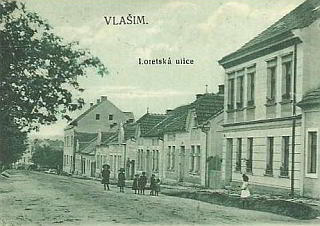
Vlašim is mentioned when Švejk tells the pious field chaplain about the dean who, just like Saint Augustine, didn't believe in the antipodes.
Background
Vlašim is a town in central Bohemia, located in the Benešov district east of the Vltava.
Jaroslav Hašek visited the town in the summer of 1922. This was his last major excursion before his premature death six months later. He also visited the area together with Zdeněk Matěj Kuděj in 1914. The inspiration for the novel would surely have come from the first visit because this part of the novel was written already in 1921.
Demography
According to the 1910 census Vlašim had 3,206 inhabitants of which 3,201 (99 per cent) reported that they used Czech in their daily speech. The judicial district was okres Vlašim, administratively it reported to hejtmanství Benešov.
Source:Seznam míst v království Českém(1913)
Military
In accordance with the recruitment districts infantrymen from Vlašim were usually assigned to Infanterieregiment Nr. 102 (Beneschau) or k.k. Landwehrinfanterieregiment Nr. 28 (Pisek).
Toulavé House (Radko Pytlík)
V létě 1922 podniká letní cestu na Pacovsko a Vlašimsko. Tentokrát už nejde pěšky, ale vyjíždí kočárem spolu se svými průvodkyněmi (se Šurou a její ruskou přítelkyní) do Dolních Kralovic. Tato místa navštívili už před válkou se Zdeňkem Matějem Kudějem na divokých toulkách "střední Evropou". Z výletu zasílá pozdrav hostinskému Invaldovi: "Mé společnice už ani nemoho plakat, jak jsou unaveny. Táhnu je do Vlašimi. Dnes jsme urazili 37 km. Dostaneme patrně, než přijedem na Lipnici, vši. Počínáme vypadat zpustle. Tvůj Jaroslav Hašek."
Quote(s) from the novel
[I.12] „U Vlašimě byl, poslušně hlásím, pane feldkurát,“ řekl Švejk, „jeden děkan a ten měl, když mu jeho stará hospodyně utekla s klukem i s penězi, posluhovačku
Sources: Zdeněk M. Kuděj, Radko Pytlík
Also written:Wlašimde
 | Benešov |  | |||
| |||||
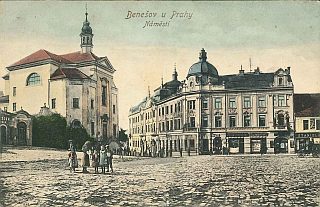
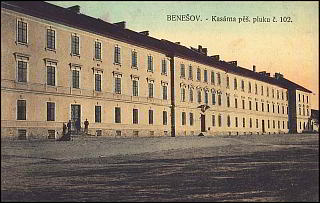
Benešov is mentioned in the story about the dean from Vlašim who didn't believe in the antipodeans. The town is mentioned again in [II.3] in connection with the executed reservist Kudrna and in [II.5] when preparing the departure to the front.
The train with Švejk and Oberleutnant Lukáš would have stopped here in [II.1], about one hour after the departing from Prague.
Background
Benešov is a town in central Bohemia with around 16,000 inhabitants. It is located appx. 40 kilometres south east of Prague, and is a stop on the railway line to Budějovice. The well-known château Konopiště, that until 1914 belonged to Archduke Franz Ferdinand is located 2 km to the west.
The good soldier Švejk in captivity
In Dobrý voják Švejk v zajetí Benešov is mentioned because Švejk passed it on the way to the internment camp at Thalerhof by Graz. In Benešov was attached a wagon with soldiers destined for the front in Serbia.[1]
Ve Vídni se s jich transportem přihodil malý omyl. Jejich vagón přidali v Benešově k vojenskému vlaku vezoucímu vojáky na srbské bojiště.
Demography
According to the 1910 census Benešov had 7,400 inhabitants of which 7,298 (98 per cent) reported that they used Czech in their daily speech. The judicial district was okres Benešov, administratively it reported to hejtmanství Benešov.
Source:Seznam míst v království Českém(1913)
Military
In accordance with the recruitment districts infantrymen from Benešov were usually assigned to Infanterieregiment Nr. 102 (Beneschau) or k.k. Landwehrinfanterieregiment Nr. 28 (Pisek). The town and district was the home of IR102. This regiment was assigned to the 17. Infanteriebrigade, just like the author's own Infanterieregiment Nr. 91. The two regiments fought side by side throughout the time when Jaroslav Hašek served in k.u.k. Heer. The town hosted 534 military personnel who served with IR102 and the associated recruitment district.
Quote(s) from the novel
[I.12] Vono by jich tam patřilo víc. ,U uršulinek’ mají v klášteře lahvičku s mlékem panny Marie, kterým kojila Ježíška, a v sirotčinci u Benešova, když jim tam přivezli lurdskou vodu, dostali po ní sirotkové takovou běhavku, že to svět neviděl.“
[II.3] Teď prej toho hodně věšejí a střílejí,“ řekl jeden z mužů eskorty, „nedávno nám četli na execírplace befél, že v Motole vodstřelili záložníka Kudrnu, poněvadž hejtman sekl šavlí jeho chlapečka, kerej byl na ruce u jeho ženy, když se s ním v Benešově chtěla loučit, a von se rozčílil.
Also written:Beneschaude
Literature
- Historie města Benešov
- Dojmy z karpatské a haličské válkyEmanuel Vopička9.1935
| 1 | Dobrý voják Švejk v zajetí | 1917 |
 | Australia |  | |||
| |||||

Australia is mentioned in the anecdote about the dean from Vlašim who didn't believe in the antipodeans after having read Saint Augustine.
Background
Australia was still in 1914 a dominion but with extensive self-government. The country contributed to the allied war effort; Australian forces were heavily involved in the campaign against Turkey in 1915 (Gallipoli) and in attacks on German colonies in Polynesia.
Australia is by area the sixth largest country in the world, and is also classed as a continent. The population was in 2016 just above 23 million.
Quote(s) from the novel
[I.12] Tak si zavolal svou posluhovačku a povídá k ní: ,Poslouchejte, vy jste mně jednou povídala, že váš syn je strojní zámečník a odjel do Australie.
[II.2] Dauerling má pověst lidožrouta, antropofága z australských kmenů, kteří požírají příslušníky druhých kmenů padší jim do rukou.
Also written:AustralieczAustraliende
Literature
- Hřích faráře OndřejeJaroslav Hašek31.10.1908
- Průvodčí cizinců a jiné satiry z cest i domova1913
 | Lourdes |  | |||
| |||||
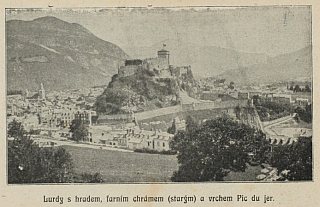

Leopold Kolísek, 1907
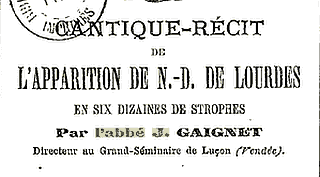
Jean Gaignet, 1875
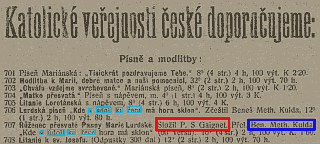
,1.6.1910
Lourdes is mentioned by Švejk through the adjective "lurdský". This is in the anecdote aboute the dean who didn't believe in the antipodeans. In this case the water of Lourdes was the theme.
The town reappears in [III.4] on the march from Sanok to the front, through The song of Lourdes.
Background
Lourdes is one of the most popular Roman-Catholic pilgrimage destination in the whole world. It is located in south-western France, not far from the border with Spain. The number of inhabitants today (2010) is around 15,000.
The song of Lourdes
The song is printed in full in the book První česká pouť do Lurd roku 1903 (The first Czech pilgrimage to Lourdes in the year 1903) and in the successor from 1907. Both books are written by father Leopold Kolísek.
The novel quotes sixteen of the sixty original verses and these are with a few exceptions reproduced to the letter by the author. The major difference is the refrain, and the first line on some of the verses. He also adds a verse that is not found in the books about the pilgrimages. The verses that appear in the novel are the following: 1, 2, 4, 7, 9, 24, 25, 50, 29, 30, 41, 53, 54, 57, 52 and 60. The somewhat changed verse order and the odd textual discrepancy indicates that the author used other sources than Kolísek's book.
The earliest printed copy in French that has been identified is a small book from 1875 that was written by the abbot Jean Gaignet (1839-1914). Gaignet is therefore no doubt the author of the original lyrics but the music may have been added later. The title of the song varies but is mostly known as l'Ave Maria de Lourdes. Gaignet's version from 1875 is called Cantique-récit de l'apparition de N.-D. de Lourdes en six dizaines de strophes. He wrote the lyrics in 1873[a].
The Czech lyrics do not correspond to the original French version, and is more aligned with the German lyrics from which it presumably has been translated. It is in any case not uncommon that verse lyrics are adapted to make rhyme and rhythm fit. An advert in the Catholic newspaper Čech in 1910 revealed that two versions of the Czech text existed: one complete text across four pages but also a shorter version printed on a single page. The first is listed as a translation done by Beneš Method Kulda (1820-1903). The same man is also behind the short version but it has not been possible to locate any copy that may confirm that this was the one Jaroslav Hašek used.
Quote(s) from the novel
[I.12] Vono by jich tam patřilo víc. ,U uršulinek’ mají v klášteře lahvičku s mlékem panny Marie, kterým kojila Ježíška, a v sirotčinci u Benešova, když jim tam přivezli lurdskou vodu, dostali po ní sirotkové takovou běhavku, že to svět neviděl.“
[III.4] Zatímco se všichni čtyři vypravili na cestu, objevil se u kumpanie pan místní plebán a rozdával vojákům dle jich národnosti lísteček s „Lourdskou písní“ ve všech jazycích.
Sources: Leopold Kolísek
Also written:Lurdycz
Literature
- První česká pouť do Lurd roku 1903
- Druhá česká pouť do Lurd roku 1907
- Cantique-récit de l'apparition ..., 1875
- Beneš Method Kulda
| a | Ce prêtre vendéen qui créa l'Ave Maria de Lourdes |
 | Gotthard Pass |  | |||
| |||||
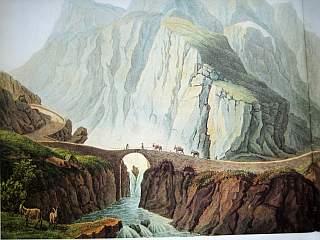
Gotthard Pass is mentioned by the pious field chaplain after he has consumed a number of potent drinks.
Background
Gotthard Pass is a mountain pass in the Alps that is located slightly south of the border between the cantons Uri and Ticino. The pass has lost much of its importance since the tunnel beneath it was opened in 1980. There is also a railway tunnel under the pass.
The chaplains somewhat nebulous monologue suggests that he rather has the St Bernhard pass in mind, since Saint Bernhard built mountain huts there for travellers, amongst them many pilgrims.
Quote(s) from the novel
[I.12] „Sv. Ludmilu mám rád, i sv. Bernardina,“ pokračoval bývalý katecheta, „ten zachránil moc poutníků ve sv. Gotthardě.
Also written:Průsmyk svatého GotthardaczGotthardpassdePasso del San Gottardoit



|
I. In the rear |
 | |
12. A religious debate | |||
| © 2008 - 2024 Jomar Hønsi | Last updated: 17.5.2024 |


